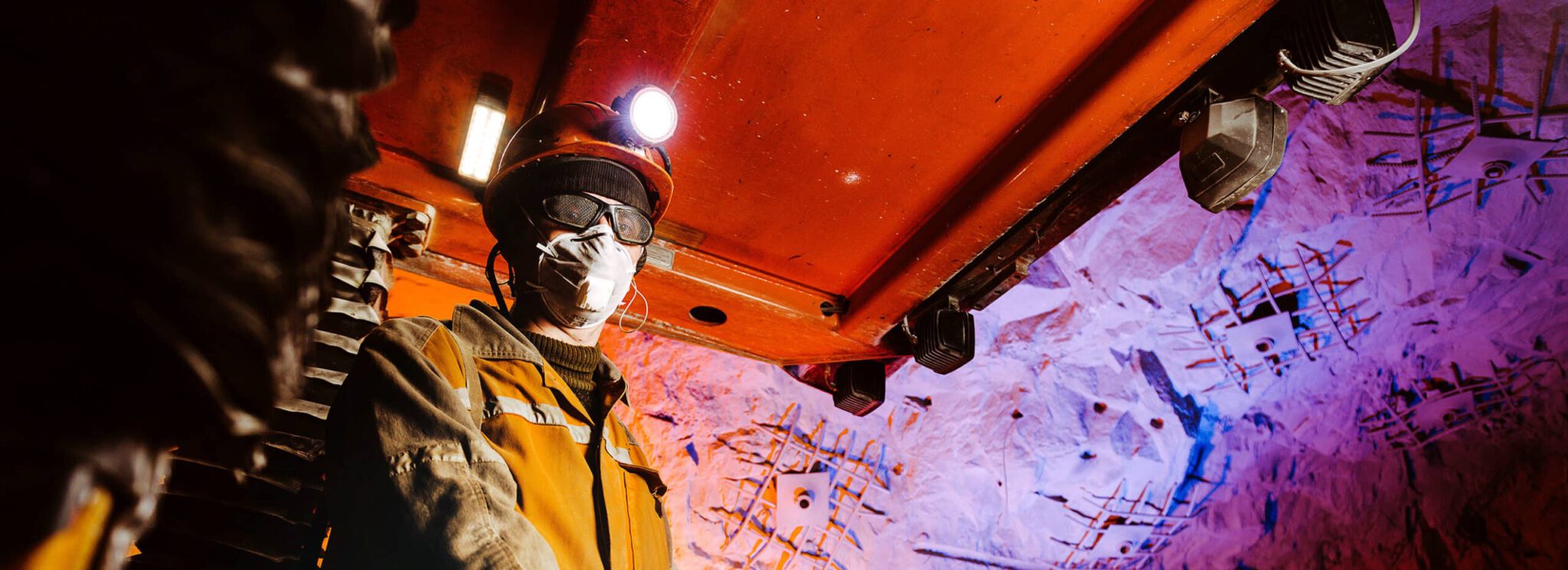The good news is the U.S. Department of Labor’s Mining Safety and Health Administration (MSHA)
reports that U.S. mining fatalities have dropped significantly between 1978 and 2018. In 1978, 242 miners died on the job. By 2018, that number fell to 28.
MSHA’s mission is to prevent death, injury, and illness from mining and promote safe and healthy workplaces for miners. The administration carries out the provisions in the Federal Mine Safety and Health Act of 1977 (Mine Act) and its amendments.
The Price of Not Prioritizing Mining Safety
Despite the advances in mining safety, the industry still deals with thousands of Mine Act violations each year. That could affect worker safety whether they work in manufacturing, production, construction, or a quarry.
The top five most frequently cited standards include:
- Accumulation of combustible materials
- Moving machine parts
- Electrical conductors
- Mine ventilation plan: submission and approval
- Safety defects
The Bureau of Labor Statistics produces a report on employer-reported workplace injuries and illnesses for 2018. The report states the mining industry had 9,800 recordable cases of injuries and 4,100 days away from work.
How accurate are the statistics? Science News
quotes a study from the University of Illinois at Chicago that says illnesses and injuries from working in Illinois mines go largely unreported. Thus, the number of actual cases could be much higher.
The National Institute for Occupational Safety and Health (NIOSH) has a web-based app called Safety Pays in Mining. Although it uses 2016 data, it can give you an estimate of the cost of an occupational injury. You can also calculate the cost of fatalities in mining.
What are the common causes of mining injuries? According to NIOSH, one-third of the nonfatal lost-time injuries occurred as the result of handling materials. In second place, comprising one-quarter of the nonfatal lost-time injuries is a slip or fall.
How to Increase Mining Safety and Security
Fortunately, mining, processing, construction, and manufacturing companies can increase safety in these seven ways.
1. Create a safety-first culture
Begin with making safety a top priority by creating and maintaining a safety-first culture. When workers know the company cares about their safety, they work harder to follow protocols. While employees may undergo OSHA training, companies can do more. One way is to post signs around the property with safety rules and reminders.
Start each workday with a safety talk and discussion. Review the processes and procedures. What are the common mistakes you see? Talk about them without referring to them as mistakes. Treat these reminders as a refresher.
Another option is to schedule a different talk topic each day. One day could cover equipment safety. Another can review the proper way to use personal protective equipment (PPE). Companies with the longest streaks without a workplace incident hold safety training on a regular basis. They also always have a dedicated safety manager on the property.
OSHA’s 10 most frequently cited OSHA standards violated in 2018 is a useful reference for these information training sessions. Perhaps, cover one topic per day. Each violated standard contains a link for recommendations on how workers can better protect themselves.
For example, fall protection
describes what employers must do to prevent injuries from falls. It also highlights what OSHA requires of employers. The page has a list of workers’ rights, standards and resources, and references for recognizing and evaluating fall hazards.
2. Promote “See something, say something”
It sounds obvious that everyone should report potential safety problems. However, the results from a survey by Crucial Conversations
authors Kerry Patterson and Joseph Grenny reveal something surprising. Nine out of 10 people report their workplace has a safety issue that no one will discuss.
Employees are your best resource for finding safety hazards. In a safety-first culture, employees report problems. They don’t fear a backlash. Speaking up and preventing an injury saves on costs associated with an injury.
It’s not just that someone gets hurt. It can cause a shutdown, which delays the work and possibly miss deadlines. That can incur penalties. If the news of the incident gets out in the public, it can affect the company’s reputation and profits. People fear confrontation. Hence, they avoid reporting or communicating problems.
Allow workers to report problems anonymously. Providing feedback on performance is also essential to safety. Managers can take training to learn how to give constructive feedback in a positive way.
3. Use high-quality personal protective equipment (PPE)
It’s tempting to save money by spending less on PPE. For instance, most work boots have a thick rubber sole and a steel toe cap. They’re most likely slip resistant. But not all of them are water-resistant, prevent electrocution, or come with proper insulation.
Look for American Society for Testing and Materials standards. ASTM is an international standards organization that sets technical standards for materials, products, services, and more. Here’s an example of their standard specification for protective toe cap footwear.
When correctly using the right gear for the job, it saves on costs. In one factory, employees slip and fall almost daily. That leads to liability issues and medical bills. Investing a little more in proper PPE reduces the number of slips and falls. This saves on bills and justifies the cost of the PPE.
Companies with lower rates of safety incidents don’t just use high-quality PPE. They also train employees on when to use the PPE and how to use it properly for each task.
4. Set standards for equipment and tool maintenance
Federal Aviation Administration sets rules for airplane maintenance. Airplanes aren’t like cars. When planes are on the ground, they do more than unload passengers and fill up on gas. The maintenance staff conducts an inspection every single time. They have processes and procedures to follow.
Valves and brakes wear out, which puts heavy machinery at risk. Tools get build-up that can slow them down or set off sparks. This is a fire risk. All equipment from excavators and dock dusters to ventilation devices and dump trucks need regular maintenance to function properly. It also extends the life of the equipment and saves on repair and replacement costs.
5. Implement dust and fume control
There’s no avoiding dust and fumes working in manufacturing, mining, and processing. But companies can take steps to protect workers’ health and safety. The area needs to have proper ventilation, vacuum devices, screens, and wet fan scrubbers to capture or remove bits in the air and fumes.
It may require supplying workers with an air supply and mask. While it costs more, investing in high-quality PPE can end up saving money in the long run. You can avoid medical bills, injuries, liability issues, and fatalities.
6. Create a fire protection plan
A mining site has a lot of hot work, combustible materials, electrical wiring, and other items that can set off a fire. Create a system with processes to protect the employees and the company’s assets. The fire protection plan covers what to do in case any of the possible fire scenarios happen. Employees need to know how to respond. Conduct fire drills for different situations.
The fire protection plan contains steps for inspecting tools and equipment prior to the start of the work. Again, within an hour after the end of work. Equipment remains hot and could still set off sparks.
7. Install video surveillance cameras
Remote video surveillance can go a long way in enhancing mining safety. With strategically placed cameras, the entire property has eyes on it. Optimizing video surveillance requires storing footage for as long as possible. When something happens, you can review the footage to see what happened.
In addition to providing proof of an incident, video surveillance can help management spot potential hazards. This helps to remedy the problem before anyone gets hurt.
Video surveillance can watch for bottlenecks and improper use of equipment. It’s not about catching employees breaking the rules. It’s about helping them do their jobs better. They may not have received proper training or forget to do steps.
Finding the Right Option for Mining Safety and Security
Remote video surveillance combines analytics and human intelligence to monitor the property. It can also help deter theft and vandalism. Best of all, the video surveillance system and monitoring service only cost a fraction of what it would cost to hire security guards. Thus, it delivers a fast ROI.
You can get the right system for your business with these options:
- Mobile Video Surveillance: Built for speedy deployment and can be mounted on almost any pole or flat surface.
- System health check: Checks to see if the system works properly.
- Thermal imaging: Sees what standard cameras can’t see.
- Video analysis: Reviews hours of video footage to investigate issues and provide evidence.
Every industry has different security requirements. What works for one may not work for another. So, contact remote video surveillance companies with experience in your industry.
Stealth’s remote video surveillance offers proactive response, extensive site coverage, quicker response times, and round-the-clock protection. When you work with a security monitoring company like Stealth, you get a customized mining security solution that fits your requirements. To learn more, please contact us.

